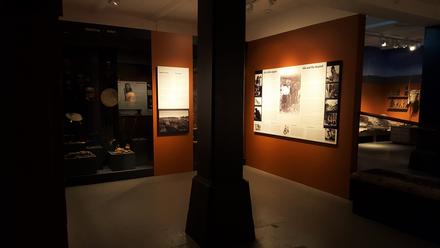

Qilakitsormiut
Explore the faith and lifeworld of the Inuit in the museum’s collection of intangible cultural heritage. This exhibition explores mask and drum dances, as well as the oral traditions of the Inuit. You can experience the fascinating, well-preserved clothing discovered with eight mummies in two graves at the Qilakitsoq settlement in northwest Greenland. Four of the mummies can be seen in a separate room in the Qilakitsoq exhibition, the mummies represent individual stories of life, death, faith and society in the past.
Qilakitsormiut
The people were buried around 1475 just outside the Qilakitsoq settlement at Uummannaq. Two graves held the bodies of six women and two boys – three generations with close family ties traversing both graves. The cause of their deaths is unknown, but it is thought that they all died around the same time in the autumn, shortly after arriving at the winter settlement. They were wrapped in skins and fully dressed. They were carefully prepared according to ancient customs, and buried with extra skins and clothing to ensure a safe journey and good life in the realm of the dead. The five oldest women have almost identical facial tattoos, which could have symbolised kinship or social standing. The youngest woman, aged around twenty, has no tattoos, possibly because she was unmarried or childless. Tattoos were widespread among Inuit women for millennia, but disappeared rapidly with the initiation of European missionary activities in Greenland, presumably because the missionaries associated them with heathenism and therefore declared them sinful. Amulets were found on and between the clothing. The Inuit used amulets to give them strength and protect them from evil spirits. The graves were discovered in 1972 by the brothers Hans and Jokum Grønvold from Uumannaq.